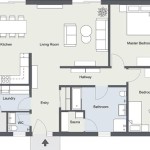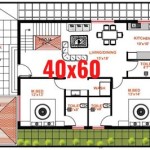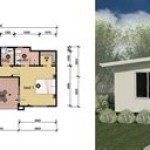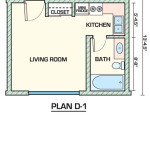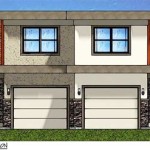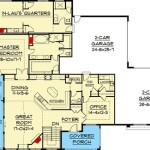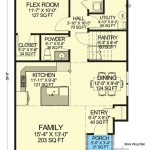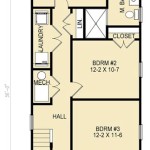Floor Plans For Old Victorian Houses: A Comprehensive Guide
Victorian houses, characterized by their ornate details, asymmetrical facades, and vibrant colors, represent a significant era in architectural history. Understanding the floor plans of these homes is crucial for restoration, renovation, or simply appreciating their design complexities. This article provides a detailed exploration of Victorian house floor plans, focusing on common layouts, distinct features, and considerations for modern adaptation.
The Victorian era, spanning from 1837 to 1901, witnessed a surge in architectural innovation fueled by industrial advancements and evolving societal norms. This resulted in diverse Victorian house styles, each with its own variations in floor plan design. Queen Anne, Italianate, Gothic Revival, and Second Empire are just a few examples of the styles prevalent during this period. Although distinct in their aesthetic details, these styles often shared core characteristics in their interior layouts.
Common Characteristics of Victorian House Floor Plans
Victorian house floor plans were largely influenced by the social conventions of the time. The emphasis on propriety and the separation of public and private spaces played a significant role in shaping the interior arrangement. Several key characteristics are consistently observed across various Victorian house styles.
One of the most defining features is the separation of formal and informal spaces. The ground floor typically housed the formal areas: the parlor, dining room, and library. These rooms were designed for receiving guests and entertaining. The parlor, often located near the entrance, served as a formal living space, meticulously decorated to impress visitors. The dining room, usually situated adjacent to the parlor and kitchen, was dedicated to formal meals. Libraries and studies provided more secluded spaces for reading and intellectual pursuits.
Upper floors were reserved for private living areas, including bedrooms and bathrooms. The master bedroom was typically the largest and most elaborately decorated, reflecting the homeowner's status. Children's bedrooms and guest rooms were also located on the upper floors. The arrangement of these rooms often prioritized privacy and separation from the formal areas below. Bathrooms, a relatively new addition to the home during the Victorian era, were often smaller and utilitarian, reflecting their functional purpose.
Hallways and staircases played a crucial role in connecting the various spaces within the Victorian home. Long, wide hallways were common, providing access to multiple rooms and creating a sense of grandeur. Staircases were often centrally located and intricately designed, serving as a focal point of the interior. Servants' staircases and back hallways were sometimes included to allow for discrete access to different parts of the house, reflecting the social hierarchy of the time.
The kitchen was typically located at the back of the house, often separated from the formal dining area by a pantry or butler's pantry. This separation was intended to minimize the disruption of cooking activities and maintain the formality of the dining experience. Victorian kitchens were often large and functional, equipped with a range of appliances and storage spaces necessary for preparing elaborate meals. Adjacent to the kitchen were often spaces for food storage, such as a cold cellar or pantry.
Specific Room Functions and Layout Considerations
Understanding the intended function of each room helps to decipher the original design intent and informs decisions during restoration or renovation. Each room within a Victorian house was meticulously planned to serve a specific purpose, influencing its size, layout, and decorative elements.
The parlor, as stated earlier, served as the primary reception room. Its placement near the entrance facilitated easy access for guests. The décor was usually elaborate, showcasing the homeowner's taste and wealth. Furniture arrangements fostered conversation and social interaction. Fireplaces served as both a source of heat and a decorative focal point.
The dining room was designed for formal meal service. Its proximity to both the kitchen and parlor facilitated efficient serving and a seamless transition between dining and socializing. A large dining table was the central feature, surrounded by chairs suitable for hosting multiple guests. Sideboards and china cabinets provided storage for dinnerware and serving pieces. Natural light was often emphasized, creating a pleasant and inviting atmosphere.
Bedrooms were private sanctuaries designed for rest and relaxation. The master bedroom was typically the largest and most luxurious, featuring a large bed, ample storage space, and often a dressing area. Smaller bedrooms were provided for children and guests. Fireplaces were common in bedrooms, providing warmth and a cozy atmosphere. Windows were strategically placed to maximize natural light and ventilation.
Bathrooms, as an evolving feature during the Victorian era, varied in size and amenities. Early Victorian bathrooms were often small and utilitarian, equipped with a simple bathtub, sink, and toilet. As plumbing technology advanced, bathrooms became more elaborate, featuring claw-foot tubs, pedestal sinks, and decorative fixtures. The placement of the bathroom was often dictated by plumbing considerations, typically located near existing water lines.
The kitchen, as the heart of the household, was a bustling hub of activity. Its location at the back of the house helped to minimize noise and odors from permeating the formal areas. A large cooking range was the central appliance, accompanied by a sink, work surfaces, and ample storage space. Pantries and cold cellars provided additional storage for food and supplies. Natural light and ventilation were essential, ensuring a comfortable and hygienic environment.
Adapting Victorian Floor Plans for Modern Living
While Victorian houses possess undeniable charm and historical significance, their original floor plans may not always align with the needs and preferences of modern homeowners. Adapting these layouts for contemporary living requires careful consideration and a balance between preserving historical integrity and creating functional and comfortable spaces.
One of the most common modifications involves opening up the floor plan to create a more open and flowing living space. This often involves removing walls between the kitchen, dining room, and living room, creating a larger, more versatile area suitable for modern family life. While this can significantly improve the usability of the space, it's important to consider the impact on the original architectural character. Careful planning and the use of sympathetic design elements can help to seamlessly integrate modern features while preserving the historical integrity of the house.
Another common adaptation involves updating the kitchen and bathrooms to meet modern standards. This may involve replacing outdated appliances and fixtures with modern alternatives, adding more storage space, and improving ventilation. While modernizing these spaces, it's important to maintain a sense of historical authenticity by using materials and finishes that are appropriate for the Victorian era. Reclaimed materials, period-appropriate fixtures, and careful attention to detail can help to create a seamless blend of old and new.
Adding modern amenities, such as central heating and air conditioning, can also pose challenges in Victorian houses. These systems were not originally designed for these types of homes, and integrating them without compromising the architectural fabric requires careful planning. Concealing ductwork and mechanical equipment is crucial to maintain the historical integrity of the interior. Exploring alternative heating and cooling solutions, such as radiant heating or ductless mini-split systems, can minimize the impact on the original design.
Maintaining the historical character of the house is paramount during any renovation project. This involves preserving original architectural details, such as moldings, trim, and fireplaces. Repairing or restoring these features rather than replacing them can significantly enhance the historical value and aesthetic appeal of the house. Sourcing historically accurate replacement materials and finishes can also contribute to a more authentic restoration.
Finally, navigating local building codes and preservation regulations is crucial when adapting Victorian floor plans. Many municipalities have specific guidelines for renovating historic properties, and it's important to consult with local authorities to ensure compliance. Understanding these regulations can help to avoid costly delays and ensure that the renovation project is completed in a manner that respects the historical significance of the house.
In conclusion, understanding Victorian house floor plans is essential for appreciating the architectural complexities and social context of this era. By carefully considering the original design intent and adapting the layouts for modern living with sensitivity, homeowners can create spaces that are both functional and historically significant.

House Plans Victorian Vintage Sims

Vintage Victorian House Plans 1879 Print Plainfield George La Baw F Mansion Floor Plan

The Glen Flora Victorian House Plans Old Vintage

Modern Cottages J H Kirby Architect Victorian House Plans Vintage

House Plan 73837 Victorian Style With 4200 Sq Ft 2 Bed Bath

1891 Print Home Architectural Design Floor Plans Victorian Architecture Dwelling House

Victorian House Plans Monster

Untitled Victorian House Plans Mansion Floor Plan Homes

Victorian Style House Plan 4 Beds 2 5 Baths 2174 Sq Ft 72 137 Houseplans Com

29 Victorian House Plans E Book Vintage

